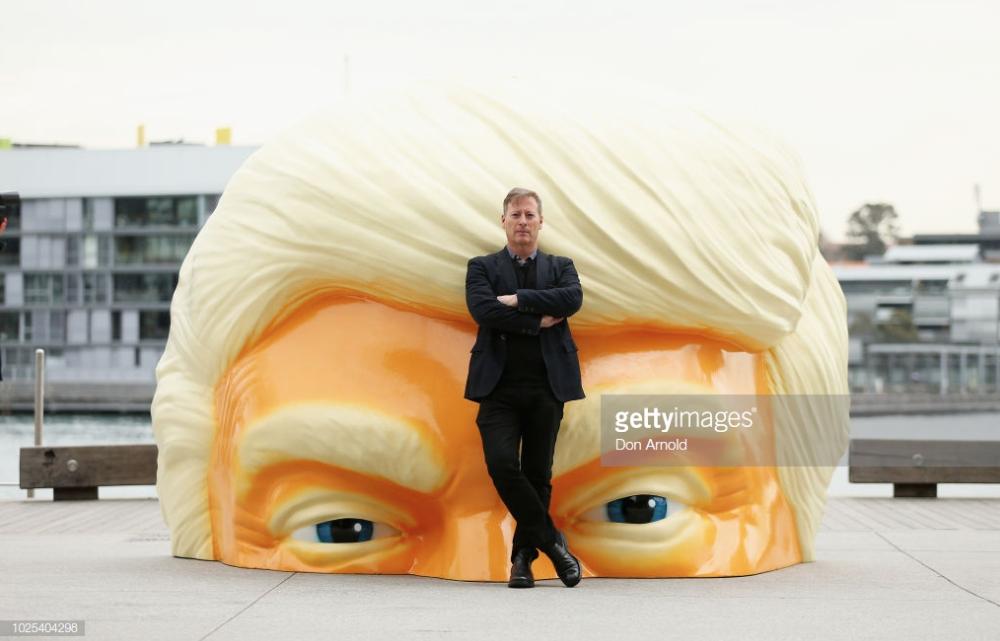2018 feels like a year in which nothing happened in the art world. Or rather, it was a facsimile of previous years. There were record-breaking auctions and door-busting exhibitions (the floral-kaleidoscopes of Hilma af Klint and Kusama were certainly amongst the most Instagrammed). There were petty gripes, debates about appropriation, and art fairs that were control-c—control-v’d from the previous year. Kaywin Feldman was appointed to be Director of the National Gallery (U.S), the first woman to take over the role. A Canadian arts organization pushed for copyright laws to change so that artists receive a cut of re-sold work. Banksy shredded a print, no doubt increasing its value (I’d like to pause here to note that the counterculture can be as guilty of participating in consumerism as the next person). We uploaded our faces to Google’s database in hopes of finding an art doppelgänger (God knows what Google will do with that data). Most things I thought happened this year, when I Googled, it turned out actually happened in 2017.
I can’t help but feel...bored. In the context of all that’s going on—sea levels and fascism—it feels like the art world is lacking; unable to keep up with the magnitude that’s demanded to compete with the state of the world.
If you were optimistic that the momentum of #MeToo would reach the art world, 2018 was a disappointment. The organization formed to combat injustices against women in the art world, We Are Not Surprised [WANS], fled the gates in 2017 with an ambitious call to action. “[W]e have been groped, undermined, harassed, infantilized, scorned, threatened, and intimidated by those in positions of power who control access to resources and opportunities. We have held our tongues, threatened by power wielded over us and promises of institutional access and career advancement,” the original letter read. Signatories of the open letter, myself included, reached close to 10k. But, as their February 2018 letter points out, not much changed: “Three months later, WANS is still NOT SURPRISED. Knight Landesman remains co-owner of Artforum…WANS can’t stand for this.” No letters have been published by WANS since February, and their social media presence consists of Guerrilla Girls-style memes pointing out gendered pay discrepancies.
Protests reminiscent of feminist art collective Guerrilla Girls cropped up in a few other places as well. Artist and activist Michelle Hartney affixed wall labels at the Met that outlined the transgressions of famous historical painters such as Gaugin, Picasso, and, of course, Balthus. At the Whitney Museum of American Art, artist Rafael Shimuov installed an entire micro-exhibition in an under-utilized space of the gallery criticizing the Museum’s Vice Chair Warren B. Kanders, whose company manufactures tear gas that is used at the U.S. border. These acts of defiance within the space demand a more transparent gallery that addresses political, cultural, and economic contexts. For an institution that relies so heavily on power dynamics—which has historically skewed patriarchal and white—it’s no surprise that abuses of power run amok. The art world will be unable, or unwilling, to tackle issues of racism and sexual assault as long as those in power have no financial reasons to act ethically. For things to truly change, it’s imperative that roles of power are dispersed to women.
At the beginning of September, the National Museum of Rio de Janeiro burned down in an alarming fire (the fault of neglect), resulting in 90% of the collection being destroyed. A month later, Jair Bolsonaro, a fascist, perhaps worse than Trump, was elected and began to burn books. Artists from Brazil have already noted an uprise in intimidation tactics and death threats.

Sydney Contemporary Art Fair - Media Call. SYDNEY, AUSTRALIA - AUGUST 31: Callum Morton poses in front of his 'Shelter' during a media call for the Sydney Contemporary Art Fair on August 31, 2018 in Sydney, Australia. (Photo by Don Arnold / WireImage,) Retrieved from : GettyImages.de
In 2018, the shocks of censorship, itself a vessel of fascism, can be felt around the world. Artist Josephine Meckseper’s collage of the American flag was removed from the University of Kansas. In China, Ai Weiwei’s studio was demolished by Chinese Authorities. Documentary photographer Xu Xiaoli vanished in November and, at the end of December, Chinese authorities confirmed he’d been arrested. Jamal Khashoggi, an author and columnist for the Washington Post, was assassinated in the Saudi Arabian consulate in Istanbul. A recording of his murder was sent to heads of state, including in Canada and the U.S., who reacted with complicity. The Western art world sees censorship as a worthwhile topic up for debate, ignoring the fact it leads to death and repression around the world.
In response to a crumbling democracy, protest art this year often simply depicted Trump’s face. The mocking of his visage sends a message that his face itself is a form of criticism. This tactic—one in line with political caricatures throughout history—doesn’t quite stand up. The image of Trump (safety-vest orange, mouth bellowing, wig made of straw) aren’t mockeries as much as realism--Trump himself is propelled by exaggerations--creating an accidental icon. It’s hard to create satire when we’re slipping towards dystopia—the exaggerations will soon enough come true, or else they’ll give those in power ideas. An ugly portrait seems insufficient. There are dead children, incarcerated children, people being sexually assaulted, artists imprisoned for creating, gunmen killing crowds of people, incels driving into pedestrians. It’s naive to think art can combat these ills, but it can tackle them in ways that are meaningful and potent. I can’t help but feel like the efforts to fight against the structure of the art world—the wall labels, the caricatures—aren’t enough. But what is the role of art in these times? Perhaps art that acts as a respite from the above is enough. So we pick up our phones and take a selfie; reflected in Kusama’s infinite mirrors, or matched to an art doppelgängers.
I don’t know how to fully express how exhausted I am.